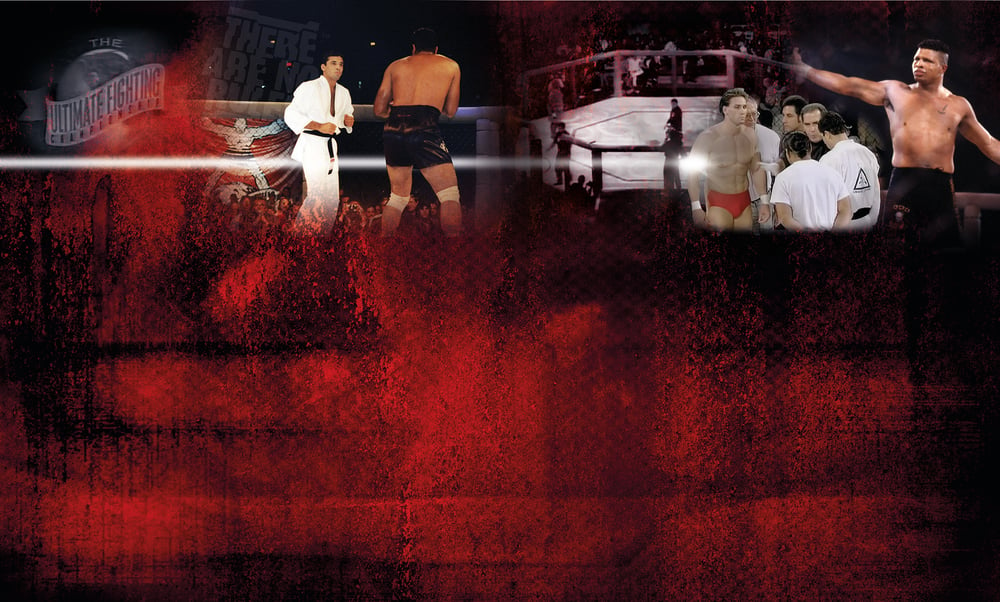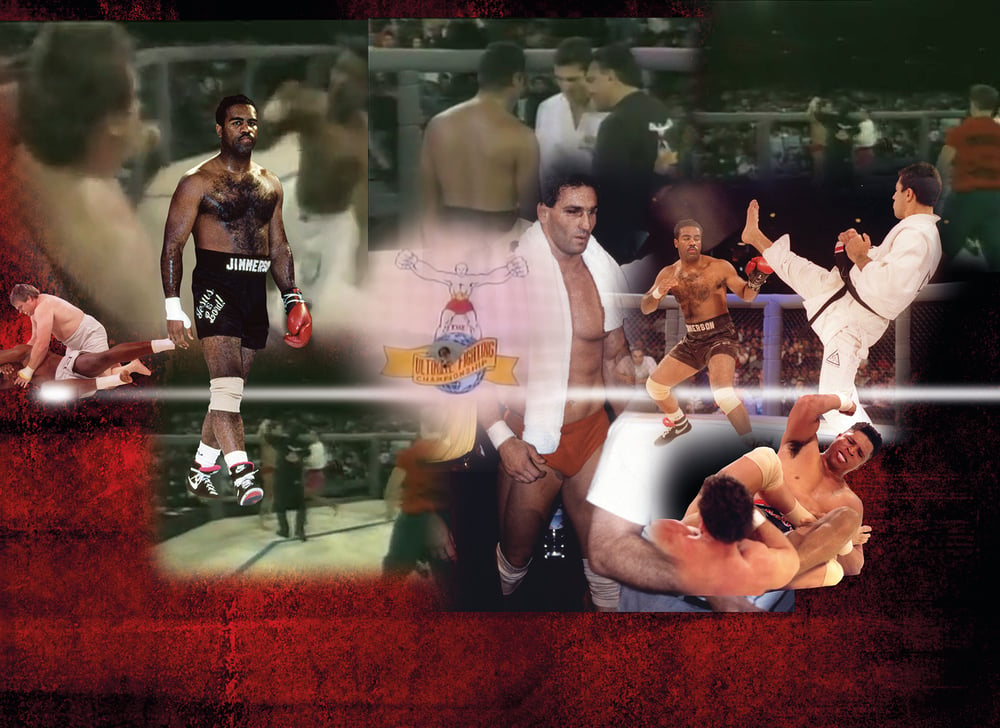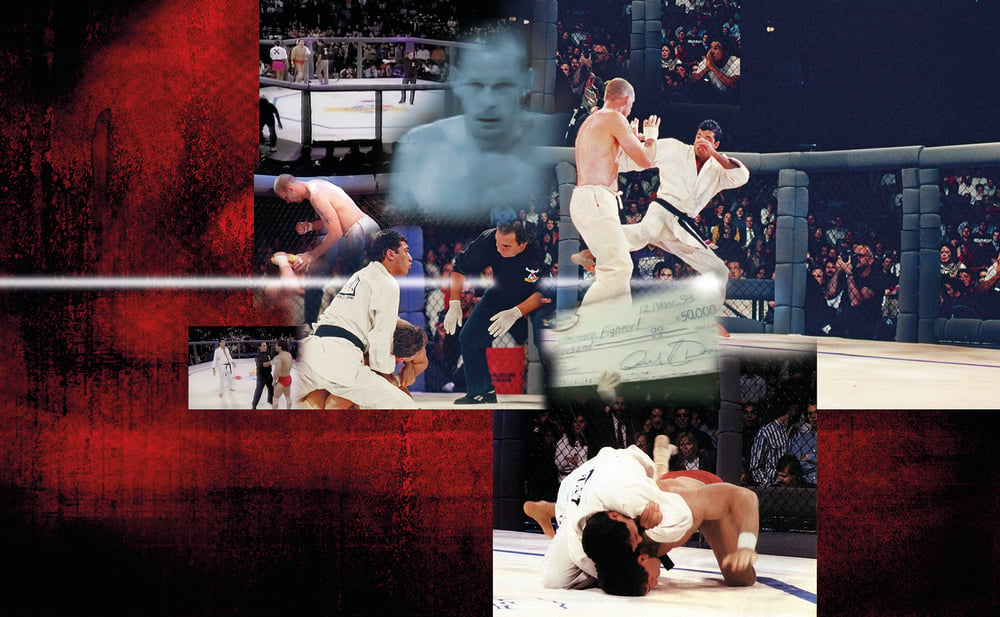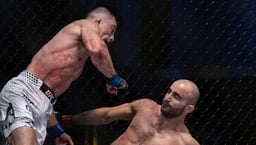
Issue 107
November 2013
How did a member of fighting’s first family, a movie director and an advertising executive kick-off the most exciting and fastest-growing sport in the world? FO speaks to everybody involved to find out the real truth behind UFC 1.
A handful of people who put on a one-night last-man-standing tournament changed martial arts and indeed sports entertainment forever. What they accomplished morphed into a cult no-holds-barred spectacle and ultimately a billion-dollar company courting mainstream markets across the globe. To celebrate the 20-year anniversary of the very first UFC event — an eight-man elimination competition held in Colorado — Fighters Only spoke to the people who worked in and out of the cage on one of the most significant nights in sports history.
Reduced-rules tournaments had been done before, but the UFC presented its version on a grander scale and, most importantly, via a glitzy, much-hyped pay-per-view (or VHS cassette for those outside the broadcast’s reach). By debunking the bigger-is-better and style-over-substance creed of much of martial arts at the time, after November 12th 1993, when delicate-looking Royce Gracie grappled and choked his way to the winner’s check ahead of seven other fighters, the combat world was never the same.
Here we tell the UFC 1 story in unprecedented depth and detail. It’s a tale of confidence, both in an outlandish concept and for the fighters in their own abilities, and, above all, a story of twists, turns and unbelievable fortuity. Think you know the story of UFC 1? Think again.
The idea
One eternal question: which fighting style is best? How a few men in suits, several men in gis and a controversial comedian helped provide the answer.
Art Davie / advertising executive, UFC co-creator
“I was working for an advertising agency and one of my clients was Wisdom Imports and the beer, Tecate. One of the projects we suggested for them was to develop a sport that would attract young men, and during my research I read an article about Rorion Gracie in the September 1989 issue of Playboy magazine. I reached out to him and that’s how I discovered Gracie jiu-jitsu, and how I ended up becoming a student at Rorion’s academy.
“As it turned out, Tecate decided to pass on the idea – just think, they could have owned the UFC – but I was hooked. I was taking classes alongside movie director and screenwriter John Milius and that’s how the three of us ended up sitting in Rorion’s office talking about a tournament.
Rorion had been approached by various people to do something similar, but he wasn’t willing to move away from the traditional Gracie Challenge. Yet I always saw it as something different.”
John McCarthy / future UFC referee, Royce Gracie training partner
“I was training with the Gracies. Art Davie had become a partner with Rorion and Art was really the reason behind the Gracies In Action tapes. He’d marketed those and put those out and they were trying to put together this competition. And it was really because Rorion had spent a lot of time and energy trying to get people to understand jiu-jitsu and how effective it was. But, for the most part, North America was very much into the high-flying kicks and fancy spinning back kicks and things like that they were seeing in the movies. They really didn’t care. We would go to karate tournaments and put on demonstrations and make challenges and say, ‘Anyone who wants to try, can try.’ But they rarely did.”
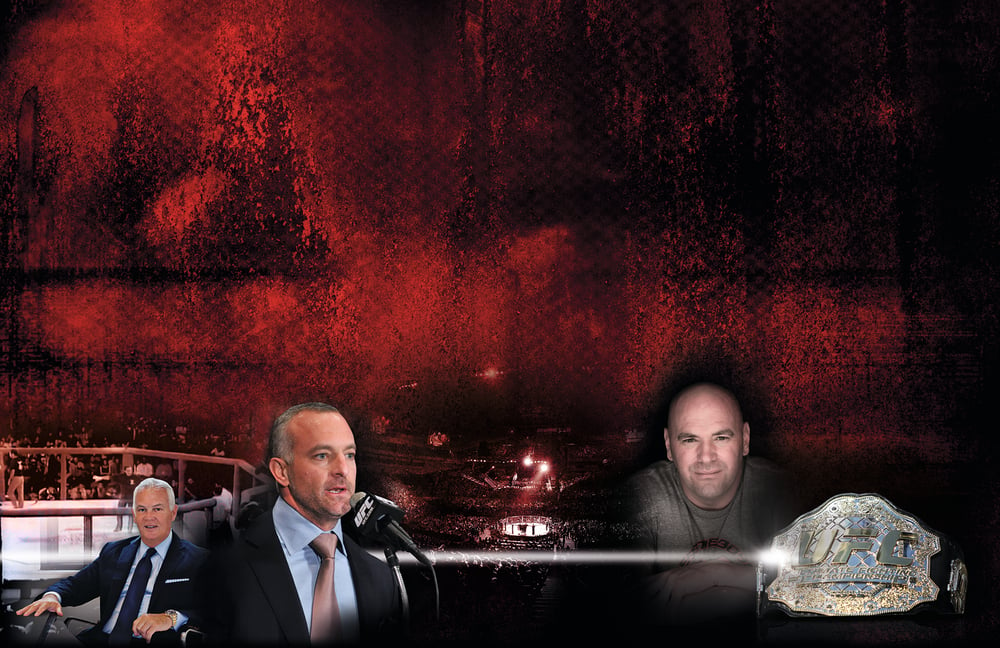
AD: “It was at least a year until Rorion came around to doing something other than the Gracie Challenge. He hadn’t been successful in attracting another martial artist to come and compete against a member of his family for $100,000. And I understood why because I understood the mentality of the martial artist.
“I knew that one martial artist challenging another was going to be rife with problems, concerns and worries about a possible fix.
“By this stage I had really built a solid advertising campaign behind Rorion’s instructional videos and it was making money, so I had more credibility within the group and was able to push forward with my idea of a tournament. On this basis we established a partnership and I went to Colorado and established WOW, War of the Worlds Promotions, a limited liability company in a state I knew had the freedom to stage a bareknuckle fighting event. That was in 1992. Rorion and I had talked about doing an event the following year, maybe in Brazil. But following my trip to Colorado, and linking up with an attorney there, the opportunity to stage the event in that state became much more of a viable option.
“Armed with a business plan, we went out and generated some capital through friends and family that allowed us to present this professionally to investors and media outlets. We went to HBO; I went to Showtime; I went to Semaphore Entertainment and ESPN and, quite frankly, we were turned down by all of them. But Semaphore (SEG), who were pioneers of pay-per-view in the United States, immediately got it.”
Campbell McLaren / SEG producer, UFC 1 Exec Producer
“Art had the idea for a pay-per-view, but everybody threw him out of their office. Yes, HBO and Showtime both could have owned the UFC. Back then Art was like the actor Joe Pesci; he had that same manic personality. He explained who the Gracies were and how they would fight anybody on earth, and that intrigued me. They were looking to fight (Mike) Tyson of all people to prove that jiu-jitsu was the best form of fighting.
“At the same time we also had the video game Mortal Kombat, and I loved it. You know, the karate guy fighting in his karate pants and the sumo guy, and the tough guy. It was just such a great mix. I was also aware that for a long time Bruce Lee had been talking about finding the best style of fighting.
“At that time Semaphore Entertainment was owned by Bertelsmann, BMG, the big German media conglomerate, staging primarily music pay-per-views. They took BMG artists like Lynyrd Skynyrd, or at least what was left of the band at the time, Travis Tritt, all these kinds of bands; but every single one of the par-per-views lost money. And sometimes as much as a million dollars – and that was a lot of money back then. So my job was to come up with no-music stuff.
“I’d approached Andrew ‘Dice’ Clay (stand-up comedian). He’d been dropped by his movie company, by his record company, and by his manager for making what were perceived as anti-gay statements. So he was banned, he was kicked out. But his fans still loved him, and they couldn’t see him on TV. So I put him on pay-per-view in July 1993 in a show called No Apologies, and it was a huge hit. I mean it made a lot of money.
“The profits come in around three months after the event, and it was the profits from Andrew Dice Clay’s pay-per-view that paid for the production of UFC 1. I had been like persona non grata in the SEG office until then... Without the success of Dice’s show there would never have been any money for UFC 1.”
The plan
They had the loose concept, but now they had to work out how they would execute it, what they would call it and how they would recruit the men who’d do it.
AD: “Rorion and I made a deal that I’d be the matchmaker to avoid talk of a set-up, so I advertised in martial arts magazines for fighters. I fired out invitations via fax to organizations as far away as the Netherlands for the first event. But there were two fighters I really wanted: a boxer and a sumo wrestler. I reached out to the American Sumo Association and they recommended Teila Tuli who had just been exiled from Japanese sumo. And I also reached out to an attorney in St Louis for a boxer as he represented former world heavyweight champion Leon Spinks, James ‘Bonecrusher’ Smith and Art ‘The King’ Jimmerson.”
CM: “When we designed the magazine ad, looking for potential competitors, we didn’t have an image for the sport. So I took some taekwondo pics and blurred them out of focus. Now the UFC seems so natural, but before November 12th 1993 we didn’t know what it would even look like.”
JM: “They kept putting out this ad in Black Belt magazine. ‘Are you tough? Do you think you’re tough? Sign up for…’ And it was this thing no one had heard of.”
AD: “We had a number of working titles: World’s Best Fighter, War of the Worlds. But Michael Abramson, a sales manager at Semaphore, who was the one tasked with talking to the cable companies and selling them the event, suggested Ultimate Fighting Championship. Quite frankly, at first we didn’t like it. It was three words and we were worried fans would forget the final word, ‘Is it Ultimate Fighting Challenge or something?’ But Michael insisted the world ‘ultimate’ was key as it suggested there was nothing beyond this.”
CM: “I actually never liked the name but it made sense, and it summed up what we were selling. My contribution included things like, ‘Banned in 49 states,’ which we were still using after we’d been in eight states. It actually wasn’t banned anywhere when we started. I also came up with the ‘No rules’ stuff, too, because it was all just Mortal Kombat to me. We also wanted this to be the home of real-life superheroes. Look at the design of that first logo.”
AD: “We’d hired a graphic design team in New York City to come up with a series of suggested logos – and the guy and the glove was the one we thought didn’t emphasize too much one specific martial art. It was a graphic that depicted a fighting event without any specific style, and that was important.”
The Octagon
What one of the world’s most famous sports surfaces could have been, and Hollywood’s leading role in what it finally became.
CM: “I was thinking the fights would take place in a dirt pit or something, but John Milius said, ‘No, it’s got to take place inside an octagon, like the one Conan fought inside in Conan The Barbarian.’ And that made so much sense to me. It was a cool idea. He also wanted to put Greek columns around it, which I didn’t like; but I was thinking razor wire myself so, you know, it was the early days and we were just throwing every idea had into the hat. It was a set and stage designer over at SEG, called Jason Cusson, who actually built the original Octagon.”
JM: “Alligators? Yeah, they talked about (having them around the ring), but it wasn’t sincere. They also thought about doing a Plexiglas enclosure so people could see through it, but keep the fighters in. But then the fighters could get hurt so the Plexiglas was taken out; and then it was a chain-link fence. Someone even said it could be electrified, but it wasn’t a serious comment. Neither was the moat with alligators. I don’t think they actually looked at buying alligators.”
CM: “One of the reasons UFC 1 was a success was costs were so low. SEG thought nothing of spending huge sums on the Young Messiah Christian Music Tour or David Hasselhoff and his Baywatch friends, which no one watched. But for UFC 1 I had $7,000 for marketing – total. Rorion and Art put up the purse, which was like $65,000, and the Octagon cost around $60,000 to design, build, transport and paint. The production of the show, which involved seven cameras probably cost around $150,000. So when it takes in 80,000 buys at $19.95 or whatever it was, and the producers keep 40%, we made good money. And nobody expected us to do that many buys. Today that would be like doing over 300,000 buys. It was unbelievable, spectacular really.”
The lineup
One of the martial arts world’s greatest quibbles after UFC 1 was that the absolute cream of the crop weren’t representing their disciplines. But, as the men who signed the original line-up explain, it wasn’t for a lack of trying.
AD: “Rorion always said anyone throwing a great punch had the capability to knock any one out, and here I was bringing in a professional boxer to challenge these people, the Gracies, among others, with a whole different level of competition than perhaps they’d ever faced before. But I also struggled to get people. I wanted Dennis Alexio (starred alongside Jean Claude Van Damme in Kickboxer), who at the time was widely thought of as the best kickboxer in the world. And I asked many Europeans, Australians and North Americans – but so many turned us down.”
Art Jimmerson / boxer, UFC 1 competitor
“I’d never heard of mixed martial arts. I was on a 15-fight winning streak in boxing, I’d not lost in five years. I was ranked in the top 10 in the world and in line for a title shot against Thomas ‘The Hitman’ Hearns. I was told they were looking for a legitimate boxer, and it sounded like easy money, so I entered.”
Zane Frazier / karate fighter, UFC 1 competitor
“The pro karate tournaments in California are unlike anywhere else. There was a fighter I basically got in to a street fight with (Frank Dux, the inspiration behind Bloodsport). I wound up taking him to the ground with a sweep and stomping him. Rorion put his arm around me and said, ‘I like you, kid. You can fight.’”
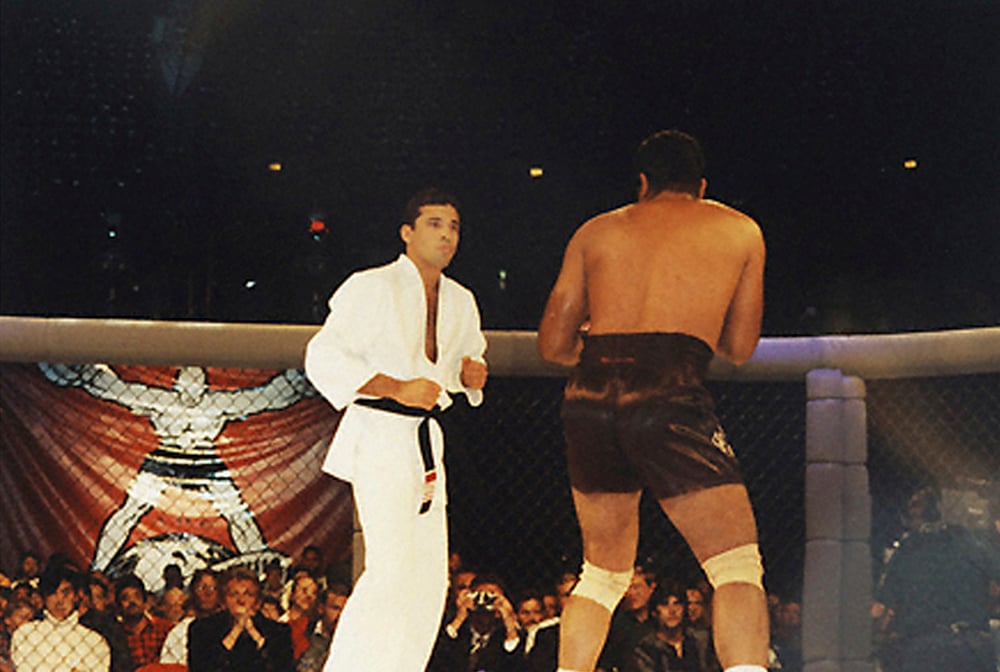
Kevin Rosier / kickboxer, UFC 1 competitor
“None of us knew what was going on. We were all a part of history and I was just happy to participate in that historic event. I’d been in tournaments before where the rules would change last minute, or the paydays weren’t there, and stuff like that. It was an exciting thing.”
ZF: “Initially Rorion had said the surface was going to be gravel. Then it was changed to be dirt. Then it was switched to clay. Then he said mats. Then grass. He said all these different things. We really didn’t know what it was going to be or what to expect.”
Gerard Gordeau / savate fighter, UFC 1 competitor
“Nobody knew what was going to happen, we were the first warriors to step in the cage. It was new and very exciting. I had only done kyokushin karate and savate bouts before, so I trained the same as always. The only difference was I started wrestling for my ground game.”
CM: “Back then we just weren’t thinking about how it would look in 20 years’ time; we were only interested in ensuring people watched that event. I was also thinking that when Royce gets knocked out by the boxer I was going to feel very sorry for the Gracies.”
AD: “We wanted this to be the ultimate proving ground for a martial artist regardless of background, culture or style. Eight men would always enter the arena and at the end of the night only one would stand supreme, and he would be the ultimate fighting champion.”


